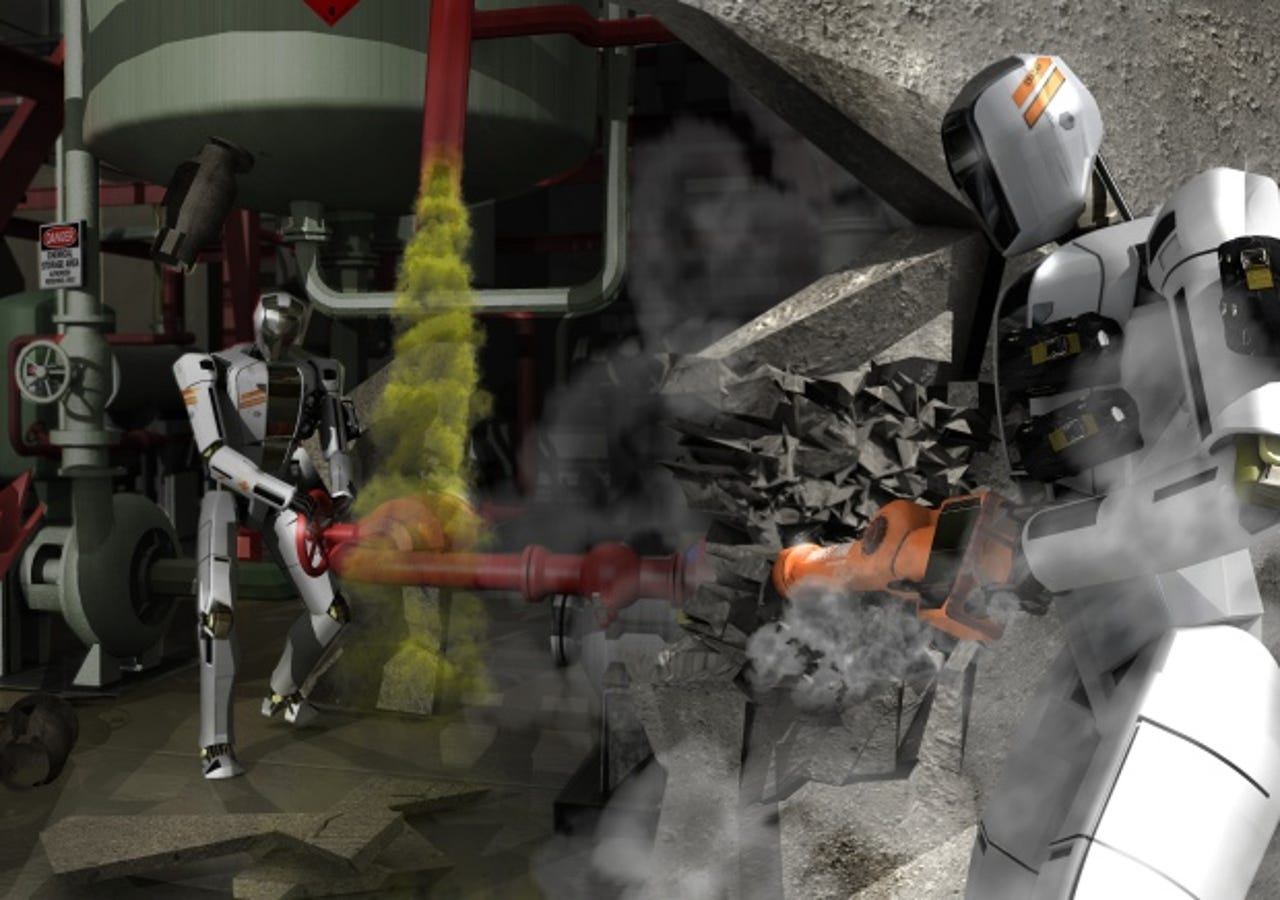Darpa kicks off quest for better batteries in bipedal robots

US defence research agency Darpa has called for companies to develop plans for robotic movement systems that are 200 times as efficient as those available today.
Darpa (the Defense Advanced Research Projects Agency) published the call for proposals for its M3 Actuation Program on Tuesday.
The scheme is an important component of the Darpa Robotics Challenge (DRC), which will launch in October 2012 with the aim of developing technologies over the next 27 months that will yield "ground robots capable of executing complex tasks in dangerous, degraded, human-engineered environments", the organisation wrote.
Darpa's DRC robots are bipedal, human-looking devices with arms, legs, a torso and a head and are being developed in parallel with the M3 scheme.

Darpa is offering $2.5m (£1.6m) per project per phase for successful proposals or components of proposals in Track 1 and $500,000 for Track 2.
"A robot that carries hundreds of pounds of equipment over rocky or wooded terrain would increase the range warfighters can travel and the speed at which they move," Darpa wrote. "But a robot that runs out of power after 10 or 20 minutes of operation is limited in its utility."
Biological inspiration
Companies developing proposals may need to take inspiration from the biological world, according to Darpa.
"Animals operate with significantly higher energy efficiency than today's robots. For example, a horse travels with a specific resistance of 0.01 to 0.02, compared to a specific resistance of one to three for several current legged robots," the organisation wrote in a PDF. "This difference of two orders of magnitude is believed to be due in large part to differences in the efficiency of actuation."
Darpa expects companies with successful proposals to demonstrate the developed actuation technologies on DRC Robots at the Darpa Robotics Challenge final competition in December 2014.
Though Darpa's DRC vision is predicated on robots doing civilian work, such as toxic clean-up, Darpa remains fundamentally a military organisation. Proposals will be judged according to how well they line up with Darpa's mission, which "is to maintain the technological superiority of the US military and prevent technological surprise from harming our national security by sponsoring revolutionary, high-pay-off research that bridges the gap between fundamental discoveries and their application".